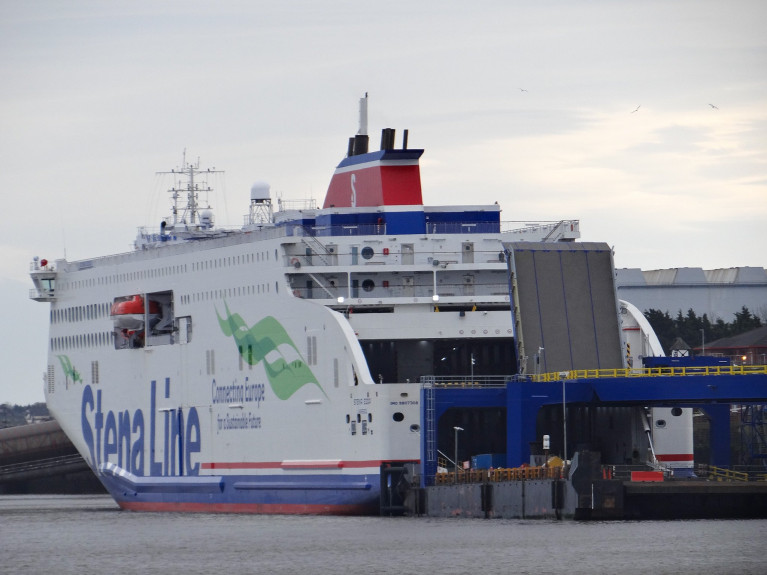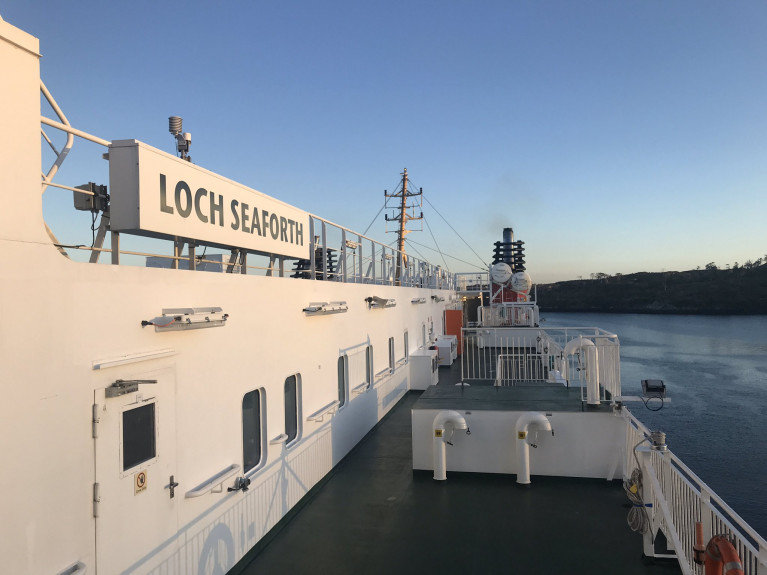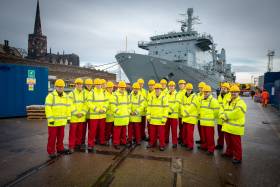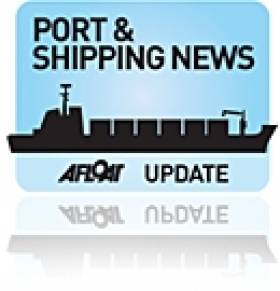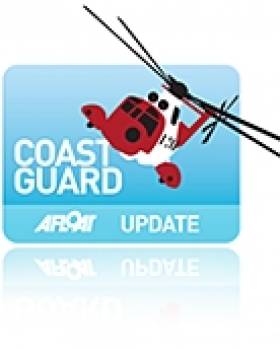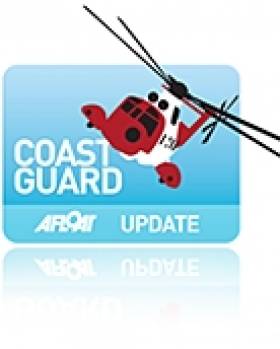Displaying items by tag: Merseyside
The Isle of Man Steam Packet's Ben-my-Chree will head back to the Island (today, 2 June), more than seven weeks after heading intoa dry dock for refit (at Cammell Laird shipyard on Merseyside).
The company's freight and passenger ro-pax ferry has been out of service since 13 April, and was initially expected to be back in action early last month.
However, the return was delayed after a detailed inspection identified issues with the stern tube bearings, requiring work by a specialist third-party company.
The operator had hoped the work would be completed in time for the 'Ben' to return to service at the end of May.
A spokesperson for the company has confirmed the ferry was due to leave the shipyard (today), but that has been delayed after the tug that was due to bring the vessel out of the dock broke.
More from Manx Radio including an audio link.
Afloat however adds that the main Manx ferry this morning still remains on Merseyside at the Birkenhead based shipyard.
For information on alternative fast-ferry sailing schedules visit the operator's website here.
Ferry Covid Outbreak As 320 Stranded Passengers Bound for Ireland Overnight On Board
Passengers were stranded overnight on a ferry bound for Belfast from Liverpool due to some crew members coming down with Covid-19.
The port health authorities at Liverpool instructed that the Stena Edda (introduced earlier this year) must be held at Birkenhead, across the River Mersey from Liverpool, as a precaution.
There were 322 passengers and 53 crew on board.
Stena said that the six crew members who tested positive for coronavirus were “being cared for and are doing well, with only mild symptoms”.
Fifteen close contacts also were identified and were self-isolating.
“Stena Line is liaising closely with public health authorities on this matter who have advised us that we should disembark the vessel in Birkenhead,” Stena said in a statement.
“The welfare of our passengers and crew is paramount at this time. The passengers are being catered for and we will assist them with alternative travel arrangements,” the company added.
The Irish Times has more here.
Jobs Concern as Scottish Operator's £29m Contract Awarded to Irish Sea Shipyard Over Clyde Firm
Scottish Government-owned ferries will undergo a £29m maintenance contract which been given to Mersey-based Cammell Laird over Dales Marine, which operates in the Garvel Dry Dock in Greenock on the Clyde.
The decision has sparked concern over the impact on jobs at the dry dock in Greenock, which employs more than 50 staff.
The new contract is the first of a £58m deal to maintain and overhaul the CalMac vessels.
It will see work carried out on the CalMac fleet serving west coast islands - including MV Lochnevis, MV Hebridean Isles, MV Isle of Mull, MV Isle of Arran, MV Caledonian Isles and MV Isle of Lewis. More here reports The Scotsman.
Afloat adds CalMac's largest ferry, MV Loch Seaforth (see Irish Sea trials) which operates Ullapool-Stornoway on the Isle of Lewis (Outer Hebrides) is currently dry-docking at the English shipyard having arrived last week.
A pair of relief ferries in the form of the aforementioned MV Isle of Lewis and MV Hebridean Isles are maintaining the route.
Loch Seaforth has accommodation for 700 passengers and 143 cars and 20 trucks was built by Flensburger Schiffbau-Gesellschaft (FGS). This is the same German shipyard that built Irish Ferries much delayed cruiseferry W.B. Yeats which made a debut in 2019 and is currently operating Dublin-Holyhead during the winter.
It is in the north Wales port from where as Afloat reported last week, the Cammell Laird built polar research ship, RRS Sir David Attenborough is to undergo technical sea trials.
As for the overall CalMac fleet is to see significant improvements during the dry docking maintenance programme to each of the company's 34 ferries involving a range of upgrades.
In the case of MV Loch Seaforth this will be the fitting of an additional 40 internal seats whereas an improved Fast Rescue Craft and cranes are being added to MV Isle of Lewis and Hebrides. Both these ferries are also receiving new disabled bathroom and changing facilities.
UK Shipyard On Merseyside Recruits 20 Apprentices Taking Investment to £19 Million
In the UK along Merseyside is shiprepairer, shipbuilder, and engineering services company Cammell Laird which has recruited 20 new apprentices to its workforce.
The famous shipyard on Birkenhead, says it has completed the most rigorous recruitment process ever undertaken with the 20 recruits starting their four-year apprenticeship this autumn at a cost of £250,000-a-year and £1million in total.
Cammell Laird chief operating officer Tony Graham said the new starters will take the total number of apprentices recruited into the business to 270 since 2008 with an ambition to take on 20 more every year. To date the company has invested more than £18million in its apprentice programme making it one of the biggest in the UK maritime industry and Northern Powerhouse region. The latest in-take will take the investment to £19million.
“We warmly welcome our new apprentices to their roles,” he said. “The sky is the limit for apprentices here at Cammell Laird with many of our senior management including myself and our CEO John Syvret starting their careers as an apprentice. The message we want to give young people, their parents, schools and colleges is that an apprenticeship offers as much opportunity as a university degree. At Cammell Laird you can start your career learning on the job, giving you the skills and training required for a high achieving career. You can become productive quickly and you will be financially better off than many young people going to university as you are effectively being paid to learn rather than having to get into debt. Then the apprenticeship is designed to secure a well-paid skilled job on completion with the company. We should also emphasize that by joining Cammell Laird you can help make a genuine difference to our community. Cammell Laird’s success helps underpin job and wealth creation on Merseyside and we’ve been able to generate £350million for the local and UK economy since 2013 employing 1500 direct and indirect workers and 300 small business suppliers at peak times.”
Mr Graham said this year’s in-take is drawn from the Merseyside region and is aged between 16 and 27.
“We want to issue a positive message built around Cammell Laird’s future order book with customers like the Royal Fleet Auxiliary, the Royal Navy and BAE Systems – we have lots of work over the next ten years (see work pipeline below),” he said. “But there is a skills gap on Merseyside and in the maritime industry. We cannot find all the people and skills we need so we are having to invest into training the next generation hence why we really want schools to get behind the job opportunities here. We have shown by building the RRS Sir David Attenborough that Cammell Laird is back in the ‘premier league’ of shipbuilding, building iconic world-famous ships. And the new group of apprentices were able to board the new polar ship for the recent Royal ship naming with the Duke and Duchess of Cambridge which sent a very strong message to them about the opportunities they have at Cammell Laird. We urge more young people to follow our apprentices and think of a career in engineering and maritime and join us on our upward trajectory.”
Mr Graham said the new apprentices will be divided into mechanical fitters, pipefitters, platers and welders.
“We have been working with our partner the Engineering College, which neighbours the shipyard, on recruiting the apprentices who will now undertake their training at the college,” he said. “This was a thorough five-stage recruitment process that saw 100 people apply initially which was eventually reduced to the final 20 recruits. We looked at their educational achievements, community activities and then undertook a team-building day before staging interviews with the HR and production departments. We know a large number of those who just missed out, on being selected, will be able to come back next year stronger and stand a great chance of securing an apprenticeship with greater understanding of what we are looking for.”
Merseyside: Major Investment In Twelve Quays, Birkenhead Nears Completion
On the Irish Sea a major £17m port modernisation project on Merseyside will help grow the region’s import and export capabilities significantly.
Work is been carried out by Peel Ports and Stena Line at the Twelve Quays terminal in Birkenhead. The project will see the dock expand to service next-generation RoRo (Roll-on/Roll-off) ferry vessels by investing in best-in-class facilities to reduce turnaround times, increase route capacity and improve health and safety by implementing one way traffic.
The newly developed terminal is expected to be fully operational by January 2020, ready to welcome Stena Line’s new fleet of E-Flexer ships which will utilise the Belfast-Liverpool route from spring 2020 following a multimillion pound investment into the region as part of a 25 year commitment.
David Huck, Managing Director – Group Ports from Peel Ports said: “The past two years have seen heavy investment in the infrastructure at Twelve Quays to offer enhanced berthing facilities for larger, more modern vessels, helping reduce turnaround times and open up opportunities to grow the region’s import and export offering by expanding capacity by 20%.
“It’s also allowed us to extend our long-term partnership with Stena Line as it takes the next steps in its major fleet investment programme, with freight and travel customers able to take advantage of faster and easier loading and unloading.”
Stena’s new E-Flexer ships are larger than today’s standard RoPax vessels and will provide freight capacity of 3,100 lane meters and the space to carry 120 cars and 1,000 passengers and crew. They are also highly fuel efficient to help reduce emissions, feeding in to Peel Ports’ goal of providing sustainable ports for the future.
Work carried out by Peel Ports includes a new multi-level berth to accommodate double-deck, simultaneous vehicle access to and from vessels as well as bigger berthing facilities for importers and exporters to take advantage of the port’s connectivity.
Liverpool’s Docks Exhibition Explores History of Merseyside's Maritime Past
This story of Liverpool’s docks will be told time in a brand new exhibition at the Merseyside Maritime Museum, called On the Waterfront, opening on Wednesday 25 November 2015.
Liverpool’s docks transformed the fortunes of the city. Their story is a 300–year journey that turned a small, regional port into one of the world’s great maritime centres.
Marking the 300th anniversary of the city’s Old Dock - the world’s first commercial wet dock– this exhibition covers the period from the 18th century up to the present day. Personal stories show how the waterfront has changed and the impact it has had on the city and the lives of local people.
In addition to stunning photographs of waterfront workers and buildings throughout Liverpool’s history, visitors will be able to see the first-known painting of Liverpool; the itinerary for Prince Albert’s visit to the city to christen the Albert Dock, and a register of vessels showing the first ship using the new Albert Dock in 1846, in addition to huge dock scales used to weigh cargo.
A section dedicated to the Three Graces will include reproductions of two newly donated Stewart Bale images of the Cunard building under construction, which have never been displayed before. They show the construction of the iconic Liverpool building during World War One and one of the photographs, dated 1913, is now the oldest image held by the Museum within its Stewart Bale collection.
The exhibition also recognises 21st-century changes to the waterfront including another National Museums Liverpool’s venue, the Museum of Liverpool. Opened in July 2011, this Museum revived the area as the bridge between the Albert Dock and the Pier Head, allowing people to walk the length of the city’s waterfront to take in not only the Museum of Liverpool but attractions including the Merseyside Maritime Museum, International Slavery Museum and Tate. The Museum of Liverpool has received more than 3.8 million visitors since first opening, and became England’s most visited museum outside of London in 2012.
Ian Murphy, Deputy Director, Merseyside Maritime Museum, said:
“The landscape of Liverpool’s maritime heritage is now a defining symbol of the city and forms part of its World Heritage Site. On the Waterfront is a record of the changing fortunes of the port, the city, and its people. It’s an important story and we are delighted to be able to tell it on the historic 300th anniversary year of the opening of Liverpool’s Old Dock, the world’s first commercial wet dock.
“Merseyside Maritime Museum itself was once a warehouse for high value goods like tea, silk, sugar and spirits in the Port of Liverpool’s Albert Dock - a powerhouse of industry. While Liverpool’s docks relocated downriver towards Seaforth, the building fell into disrepair as part of the wider decline and fall of the city’s traditional docks.
“But in 1986 the building reopened as the Merseyside Maritime Museum – the first public building to open at the dock -starting the renaissance of the waterfront, and becoming the venue we know today; one of the most visited museums in the region. This building is a perfect encapsulation of the story we are showing in the wider exhibition - the changing fortunes of the docks - and we are proud to be opening it here”.
Sue Grindrod chief executive of Albert Dock Liverpool added:
"The heritage of Albert Dock is rooted in its life as a thriving hub at the heart of the Port of Liverpool, almost 170 years of history is in the walls of these grade I listed buildings. The Dock remains today a thriving place to live, work and play at the centre of the developing Liverpool Waterfront and we welcome the addition of Waterfront 300 to share in the journey of this much loved Dock.”
Ian Pollitt, Development Investment Surveyor, Peel Holdings (Land and Property) Limited said:
“The city's docks are famous around the world and we look forward to seeing the new exhibition which I'm sure will be fascinating.
“Anyone who visits the city understands the key role the docks play in today's Liverpool. That role is set to grow in importance as we continue to make the most of the city's best asset: its waterfront”.
New Lusitania Research Changes Data - Merseyside Museum
#lusitania – An exhibition opening at Merseyside Maritime Museum on 27 March called Lusitania: life, loss, legacy will highlight little-known data that changes the commonly used figures of the last 100 years, when referencing the crew and passengers on Lusitania's final voyage.
Omitted from the previous official figures for Lusitania are Fireman Gontes Cloules, Waiter F. Hill and passenger Robert Anderson, taking the figures for people on board from 1,959 to 1,962.
In the days following the sinking, newspapers reported numerous lists of survivors and victims, obtained from various sources. It was March, 1916 when an official booklet known as the 'Cunard Confidential Report' was published, which became the official source. However, it was discovered very early on that this report contained errors, and there were at least two subsequent amendments to this, the last-known published in March 1917.
Gontes Cloules, Waiter F. Hill and passenger Robert Anderson were not included in the official lists of crew and passengers, and are therefore not reflected in the numbers widely used in reference to the tragic sinking of the Lusitania on 7 May, 1915.
Independent historian Peter Kelly has searched records over the last 10 years to bring them back into public consciousness. This and other findings of Peter's, have given us a new level of detail about passengers and crew aboard Lusitania, and will be included in the new exhibition at Merseyside Maritime Museum.
Peter Kelly said: "The figures have always been out there, except that not many of us have looked for them or been able to find them. It's not unusual for records to have been incomplete or incorrect in those times. It was an age before technology, when passenger names were often taken phonetically and misspelt, or maybe people were travelling under a different name.
"I'm not alone in researching this data and trying to tie it down so that everyone who was on-board Lusitania is recognised - whether they lost their lives when the ship went down, or survived this terrible tragedy. We all have our various theories on the names of a number of people who are recorded as having sailed on the ship, and it's a difficult process to work through due to the amount of records and personal accounts out there, some of which provide conflicting information.
"I'm at the point now where the research I've done has led me to believe these new figures are true, accounting for the three extra people that were on-board. The story of the Lusitania has always had some mystery surrounding it, and if more information comes to light about those who were on-board, the figures will be updated again."
Peter's figures will be included in the exhibition as part of an interactive resource, which can also be accessed by the public online from 27 March. The resource is such that any new data and information can be added in the future.
Ellie Moffat said: "This story of the Lusitania is so important here in Liverpool. The ship was the jewel in the city's crown and more than 600 people on her final voyage had connections with the city and wider region. Many people living today are still profoundly affected by the account of a relative who went through the sinking. When Peter came forward with his research, we were thrilled, because we want to share as much, and as complete, information as we can with the city, and with anyone connected to the ship."
General findings:
Total number of people on board:
1962 (total people previously – 1959*)
Everyone on board:
Survived: 771 (survived previously – 761*)
Lost: 1191 (lost previously – 1198*)
Comparison passenger and crew survival rates:
Passengers: 480 survived, 786 lost - 1266 total passengers (total passengers previously 1257*)
Crew: 291 survived, 405 lost - 696 total crew (total crew previously 702*)
* The 'previous official figures' refers to data taken from Cunard's official list of crew published by The Cunard Steam Ship Company in March 1915 and list of passengers lost and saved published by The Cunard Steam Ship Company in March 1916.
Fireman Gontes Cloules
Gontes Cloules was born in Malta in 1891 and lived at 99, Vicnarsa Hania, Malta.
Although the records of the Commonwealth War Graves Commission show that he served on-board the Lusitania as a Fireman in the Engineering Department and was killed when the ship was sunk, he does not appear in the Cunard Steamship Company's list of crew members, either missing or having survived.
However, a Cunard list of crew members who engaged at New York on 30 April 1915 includes the name Cloules Goutes, who signed on as a Fireman at a monthly rate of pay of £4-5s.-0d. Presumably some mistake was made and Goutes was thought to be his surname. The names are too similar for it to be anything else, although there is no Goutes listed amongst the missing either.
The name Gontes Cloules is embossed on the Mercantile Marine Memorial at Tower Hill, London. The register for the memorial does not record any verifying details of his age, family or home.
Waiter, F. Hill
F. Hill (forename not known), was born in Glasgow, Renfrewshire Scotland, in the latter half of the nineteenth century.
He was a professional sailor in the Mercantile Marine and in April 1915, he had engaged to sail to England from New York on the Cunard liner S.S. Cameronia. However, at the end of that month, the Cameronia was taken up from trade by the British Admiralty for war work and on 1 May 1915, all the passengers and cargo and some of the crew were transferred instead, to the Lusitania, then awaiting what became her final transatlantic voyage at Pier 54 in New York harbour. Waiter Hill was one of these crew members and was offered the monthly rate of pay of £4-5s.-0d. (£4.25).
Six days out of New York, when she was off the southern coast of Ireland, the liner was torpedoed and sunk by the German submarine U-20, only hours away from her Liverpool destination, but fortunately, Hill was counted amongst the survivors.
Having been rescued from the sea and landed at Queenstown, he eventually made it to Liverpool where he was officially discharged from the Lusitania's last voyage and paid the balance of wages owing to him. This was in respect of his sea service from 1 May until 8 May 1915; 24 hours after the liner had gone down.
An official list of crew known to have been on board the Lusitania when she was sunk and published by The Cunard Steam Ship Company in March 1915, does not mention Waiter Hill at all, but he does appear in a Particulars of Discharge ledger held in the Public Record Office at Richmond in Surrey.
Robert Anderson
Robert Anderson was born in Ireland in 1875. He was a provision merchant and in 1915, he had been living and trading in New York, N.Y. in the United States of America.
In the spring of 1915, he decided to return home to Ireland - and consequently booked third class passage on the scheduled May sailing of the Lusitania, from New York to Liverpool.
He arrived at the Cunard berth at Pier 54 in New York harbour on the morning of 1 May 1915 - with ticket number 1807 - only to find that the liner's 10.00 a.m. departure had been delayed. This was because she had to wait to embark passengers, crew and cargo from the Anchor Lines vessel the S.S. Cameronia, which the British Admiralty had requisitioned for war service as a troop ship at the end of April.
The Lusitania finally left port just after midday and six days later, on the afternoon of 7 May, she was torpedoed and sunk by the German submarine U-20. At that time, she was only about 250 miles away from her destination and within sight of the coast of southern Ireland.
It was probably the closest that Robert Anderson would get to his homeland as he was killed as a result of this action. As his body was never recovered from the sea and identified afterwards, he has no known grave. He was aged 40 years.
He does not appear in the list of passengers lost and saved which was published by The Cunard Steam Ship Company in March 1916, but he is on a list compiled by the company at a later time and updated as late as February 1917, now held at The Public Record Office at Richmond in Surrey. This record has been found to be a more reliable source.
#FERRY NEWS - The captain of the cargo ship Union Moon, who was arrested after his vessel collided with a passenger ferry in Belfast Lough, has been charged with 'excess alcohol by the master of a ship'.
BBC News reports that the 55-year-old was set to appear in court today, following his arrest yesterday.
No one was injured in the incident on Wednesday, when the Union Moon collided with the Stena Feronia close to the Fairway buoy between Carrickfergus and Helen's Bay. Both vessels were substantially damaged.
The cargo ship, which was carrying 2,000 tonnes of aggregate, was brought back to Belfast. Philip McNamara of the Donaghdee lifeboat confirmed that a large section of her bow was missing.
Meanwhile, engineers from Stena Irish Sea are assessing the damage to their vessel to determine how long it will be out of service. The Stena Feronia sails the route from Belfast to Birkenhead in Merseyside.
The Maritime and Coastguard Agency, the Marine Accident Investigation Branch and the PSNI are all involved in the investigation.
BBC News has more on the story HERE.
- Ferry news
- collision
- Belfast Lough
- cargo ship
- Union Moon
- captain
- charged
- drink
- excess alcohol
- ferry
- Stena Feronia
- Birkenhead
- Merseyside
- court
- Fairway buoy
- Carrickfergus
- Helen's Bay
- Philip McNamara
- Donaghdee
- Lifeboat
- Stena Irish Sea
- Maritime and Coastguard Agency
- Marine Accident Investigation Branch
- psni
Three 14 Year Olds Cut off By Tide
At 16.52 a member of the public called Liverpool Coastguard to report that they could see three children who had been by the tide on sandbanks on the River Mersey between Runcorn and Widnes. With still over an hour to go to high water, Liverpool Coastguard requested the RNLI New Brighton Inshore Lifeboat and Hovercraft, as well as informing Merseyside and Cheshire Fire and Rescue services. A rescue helicopter from RAF Valley was also requested as it was feared that the children may have been overrun by the flood tide before lifeboat and hovercraft could get there. Fortunately, Cheshire Fire and Rescue service were able to launch their inflatable boat and recover the three 14-year-olds, who, at 17.24, were reported as safely ashore - cold but otherwise unharmed.
Liverpool Coastguard Watch Manager Paul Parkes said:
"With the onset of the flood tide fast approaching and the three children stranded on the sandbank, if it weren't for the quick response of the Fire and Rescue Service this incident could have had a very different ending. With the extended Easter school holidays, we would urge parents to be mindful of the whereabouts of their children at all times and to warn them of the dangers of being cut off by the tide."
Loss of Bangor 'Would Jeopardise Air Rescues'
Ireland's free provision of air-sea rescue services to Northern Ireland could be in jeopardy if the Bangor coastguard centre is closed, a DUP MP has warned.
In today's Belfast Telegraph, Strangford's Jim Shannon said that loss of the cross-border relationship would "most certainly end in loss of life".
Shannon reiterated that the Bangor centre is not only responsible for Northern Ireland's coastline but also its inland waterways and loughs, and mountain areas such as the Mournes.
Merseyside MP Bill Esterson is also quoted as warning that his local coastguard staff "don't feel equipped to look after Northern Ireland" if services are consolidated in Liverpool.
Shipping Minister Mike Penning gave his assurance that coastguard staff would not be victimised if they submit their views to the open consultation, which has been extended to 5 May.



























